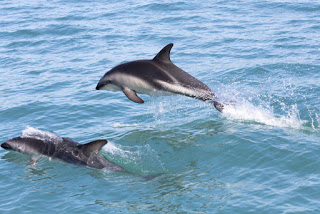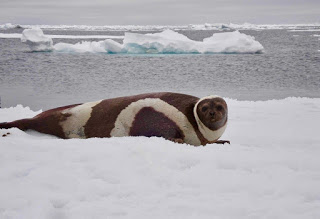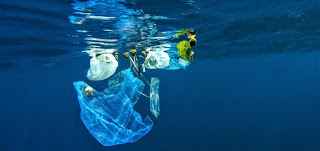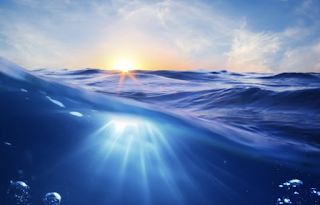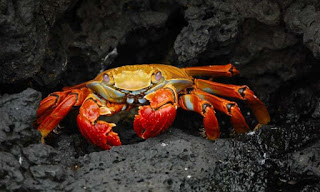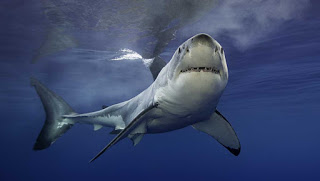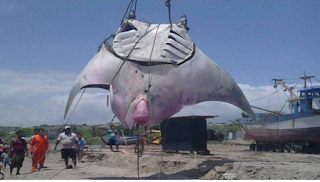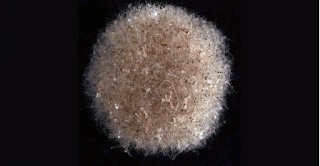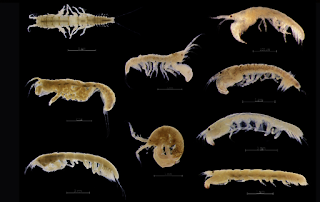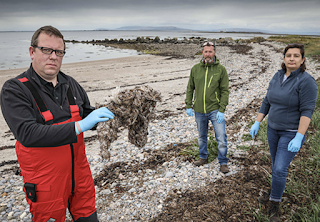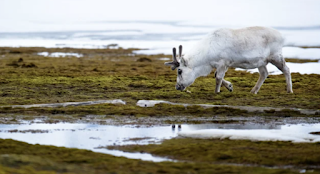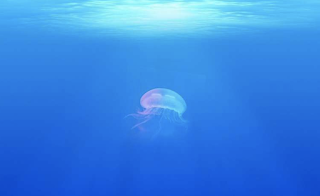New fishing measures to protect critically endangered dolphins, Climate change may intensify disease outbreak, Endangered Australian fish sold in shops and restaurants, 1,150 kg manta ray caught off the Indian coast, Arctic town records highest temperature ever, and more…
1. New fishing measures introduced to protect Hector and Māui dolphins
New protections were introduced on Wednesday to protect Hector’s and Māui dolphins from threats posed by fishing vessels. There are around 15,000 Hector’s dolphins in the wild, though the Māui is critically endangered, with only 63 dolphins over the age of one remaining, according to the Department of Conservation. Fisheries Minister Stuart Nash said the new rules would “significantly increase fishing restrictions in dolphin habitats, focusing on methods with the highest potential to affect dolphins”.
2. Climate change may intensify disease outbreak in marine mammals
A pair of conservationists have found that viruses are largely to blame for the deadliest mass die-offs in marine mammal species in decades — and the changing climate will only intensify the factors contributing to these outbreaks. Claire Sanderson and Kathleen Alexander — who both work for Virginia Tech’s fish and wildlife conservation department published their research based on a review of scientific literature on 36 mass mortality events involving infectious diseases and marine mammal populations.
Read more in “Courthouse News”
3. Scientists examine plastic submerged underwater over 20 years – it isn’t degrading
Even after more than 20 years in the ocean, everyday plastics can show very few signs of breaking up or degrading, according to a new study examining the effects of deep-sea submersion on this problematic material. Researchers looked at two plastic samples recovered from 13,615 feet below the surface of the Pacific Ocean, finding that the majority of the plastic was still fully intact.
Read more in “Science Alert”
4. Human Mercury Pollution reaches the deepest ocean trenches
Scientists have found manmade mercury pollution in the deepest part of the ocean, the Marianas Trench. The discovery raises new questions about how mercury may affect the marine environment and whether it has accumulated in the food chain. The findings, which have been reported by two research groups, were presented at the Goldschmidt Conference. Mercury is poisonous in any form, and some types of fish absorb methylmercury in contaminated water.
5. Chief scientist says we need enhanced marine protection in English waters
Marine eco-systems in English waters need greater legislative protection, according to a new independent review. Heriot-Watt’s Chief Scientist, Professor Michel Kaiser, was one of eight expert panel members invited to give their insight and guidance on “The Benyon Review into Highly Protected Marine Areas” (HPMAs) published this week. It sets out a series of recommendations including calls for the UK Government to introduce HPMAs alongside the existing Marine Protected Areas network.
6. Endangered Australian fish sold in shops and restaurants
 Endangered fish species are being routinely sold to Australian and international consumers thanks to a little-known feature of environmental laws that allows for the species to be commercially fished. Species such as blue warehou, eastern gemfish, and scalloped hammerhead, which are eligible for listing, are instead categorised as “conservation dependent”, meaning they can be caught in Australian waters and sold in shops, fish markets and restaurants, or exported, despite being considered threatened.
Endangered fish species are being routinely sold to Australian and international consumers thanks to a little-known feature of environmental laws that allows for the species to be commercially fished. Species such as blue warehou, eastern gemfish, and scalloped hammerhead, which are eligible for listing, are instead categorised as “conservation dependent”, meaning they can be caught in Australian waters and sold in shops, fish markets and restaurants, or exported, despite being considered threatened.
7. Mercury with that? Shark fins served with illegal doses of heavy metals
 Shark fin soup is said to be the food of emperors, but a new study finds this “luxury” dish may not be so favorable to the person who eats it. A team of international researchers discovered that shark fins contain high levels of mercury — in most cases, much higher than what’s legally considered safe for human consumption. To feed the insatiable demand for shark fin soup, about 100 million sharks are killed every year.
Shark fin soup is said to be the food of emperors, but a new study finds this “luxury” dish may not be so favorable to the person who eats it. A team of international researchers discovered that shark fins contain high levels of mercury — in most cases, much higher than what’s legally considered safe for human consumption. To feed the insatiable demand for shark fin soup, about 100 million sharks are killed every year.
8. Great White Shark diet surprises scientists
The first-ever detailed study of the diets of great white sharks off the east Australian coast reveals this apex predator spends more time feeding close to the seabed than expected. “Within the sharks’ stomachs, we found remains from a variety of fish species that typically live on the seafloor or buried in the sand. This indicates the sharks must spend a good portion of their time foraging just above the seabed,” said lead author Richard Grainger, a Ph.D. candidate at the Charles Perkins Centre at the University of Sydney.
A giant manta ray (Mobula birostris) weighing about 1,150 kg was caught by fishermen near Palayakatippa beach in Krishna district. The ray was caught on the evening of June 15, in the gill net by a group of six fishermen on a mechanized boat. The fishermen, led by Venkanna, had ventured into the sea on June 11. The boat owner said that the aquatic animal was brought out from the water at the Gilakaladindi harbor with the support of a crane. The 1,150-kg ray fetched 37k rupees at the Kakinada harbor.
Two new genera and four new species of giant, single-celled xenophyophores (protozoans belonging to a group called the foraminifera) were discovered in the deep Pacific Ocean during a joint project between scientists at the National Oceanography Centre, UK (NOC), the University of Hawai’i, and the University of Geneva. ‘Moana’ has inspired the name Moanammina for one of the new genera, while the second has been named Abyssalia in recognition of its abyssal habitat.
 Lawmakers are looking for ways to aid the struggling recycling industry, but the coronavirus is standing in the way of efforts to stamp down on single-use plastics. The industry was hit hard by a 2018 decision from China to close its doors to much of the U.S.’s waste, but a coronavirus-related drop in sales tax revenue has left many cities unsure of how to pay for the increasingly expensive programs.
Lawmakers are looking for ways to aid the struggling recycling industry, but the coronavirus is standing in the way of efforts to stamp down on single-use plastics. The industry was hit hard by a 2018 decision from China to close its doors to much of the U.S.’s waste, but a coronavirus-related drop in sales tax revenue has left many cities unsure of how to pay for the increasingly expensive programs. Tanaids are one of the most underappreciated animals in the world. These small crustaceans can be found in virtually all marine benthic habitats, from mangroves, rocky shores and coral reefs along the coasts to mud volcanoes, cold seeps and trenches in the deepest oceans. They even inhabit the shell surfaces of sea turtles, live inside gastropod shells like hermit crabs, and reside under the skin of deep-sea sea cucumbers.
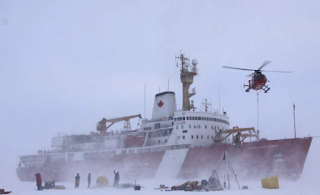 Melting of Arctic ice due to climate change has exposed more sea surface to an atmosphere with higher concentrations of carbon dioxide. Scientists have long suspected this trend would raise CO2 in Arctic Ocean water. Now University of Montana researcher Michael DeGrandpre and his patented sensors have helped an international team determine that, indeed, CO2 levels are rising in water across the Arctic Ocean’s Canada Basin.
Melting of Arctic ice due to climate change has exposed more sea surface to an atmosphere with higher concentrations of carbon dioxide. Scientists have long suspected this trend would raise CO2 in Arctic Ocean water. Now University of Montana researcher Michael DeGrandpre and his patented sensors have helped an international team determine that, indeed, CO2 levels are rising in water across the Arctic Ocean’s Canada Basin.
14. Sanitary products and wipes found to be microplastic pollutants in Irish waters
Researchers from Earth and Ocean Sciences and the Ryan Institute at the National University of Ireland have carried out a study on the contribution of widely flushed personal care textile products (wet wipes and sanitary towels) to the ocean plastic crisis. Dr. Liam Morrison led the study, which showed that sediments adjacent to a wastewater treatment plant are consistently strewn with white microplastic fibers that are comparable to those from commercially available consumer sanitary products.
15. New discovery suggests Pluto may have started hot and contained an ocean
Today, the dwarf planet Pluto orbits the sun from the edge of our solar system and its surface temperature is an inhospitable negative 378 to negative 396 degrees Fahrenheit. But a new study suggests that wasn’t always the case. Researchers have long thought that Pluto began as an icy sphere when it formed in the Kuiper Belt, a home to cold, dark objects on the edge of our solar system.
Read more in “CNN”
16. Arctic town records highest temperature ever
The temperature in a Russian town located within the Arctic circle reached 100 degrees Fahrenheit on Sunday, the hottest temperature on record for the area. Verkhoyansk, a town in the region of Siberia known for experiencing wide ranges in temperatures throughout the year, reported a temperature reading of 100.4 degrees Fahrenheit, or 38 degrees Celsius, the Associated Press reported. The previous record was 98.96 degrees Fahrenheit, while temperatures of -90 degrees Fahrenheit have also been reported in the area.
They contain no carbohydrates. No fats. No proteins. Not much else but water. Still, the moon jellies (Aurelia aurita) are eaten by predators in the sea; fish, crustaceans, sea anemones and even corals and turtles. Now a new study may explain why these predators bother to eat the gelatinous creatures. The study is based on moon jelly samples from a German Fjord. “The jellyfish in our study showed to contain some fatty acids that are very valuable for their predators. Fatty acids are vital components of cell membranes and play a crucial role in processes like growth and reproduction,” says marine biologist and jellyfish expert, Jamileh Javidpour from University of Southern Denmark.
———————————————–

